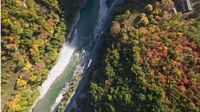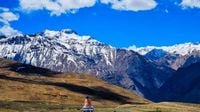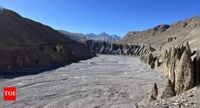On September 27, 2025, the United Nations Educational, Scientific and Cultural Organization (UNESCO) made headlines by announcing the addition of 26 new biosphere reserves across 21 countries. This historic move, revealed at the 5th World Congress of Biosphere Reserves in Hangzhou, China, marks the largest single expansion of the World Network of Biosphere Reserves in two decades. With these new designations, the network now encompasses 785 sites in 142 countries, covering an additional one million square kilometers of protected natural areas since 2018—a territory roughly equal to the size of Bolivia, according to Geographical and The Associated Press.
The most groundbreaking of these new additions is the tropical archipelago of São Tomé and Príncipe, which has become the first entire country to be declared a single UNESCO Biosphere Reserve. Rising from the Gulf of Guinea, the Ilha de São Tomé Biosphere Reserve protects 1,130 square kilometers of volcanic peaks, lush rainforests, and agricultural land. As reported by Geographical, this sanctuary is home to the endemic Obô primary tropical rainforest and unique species such as the dwarf ibis and the São Tomé shrew. Its diverse ecosystems span coral reefs, mangrove coasts, and montane cloud forests. Roughly 130,000 inhabitants sustain their traditions through artisanal fishing, sustainable cocoa and coffee cultivation, and vibrant local markets. The reserve is designed to balance economic growth—including ecotourism—with the protection of this irreplaceable natural and cultural heritage.
But São Tomé and Príncipe was not alone in achieving a historic first. Six other nations—Angola, Djibouti, Equatorial Guinea, Iceland, Oman, and Tajikistan—received their inaugural biosphere reserve designations. Each of these sites highlights the unique biodiversity and cultural richness of their regions, while also demonstrating innovative approaches to conservation and sustainable development.
Take, for instance, Albania’s Vjosa River Biosphere Reserve, which protects one of Europe’s last wild river systems. Covering 3,300 square kilometers, it supports over 1,600 species, including the Egyptian vulture and Adriatic sturgeon. Traditional farming and fishing remain the backbone of life for its 130,000 residents, illustrating the close relationship between people and their environment.
In China, the Zhouzhi Biosphere Reserve spans the transition between temperate and subtropical zones. This 690 square kilometer forested area is a watershed for over 3,630 species, including the Qinling Panda and Golden Snub-nosed Monkey. The reserve’s integration of Taoist heritage with sustainable livelihoods—like its status as the world’s largest kiwi fruit production base—shows how conservation and economic activity can go hand in hand.
Equatorial Guinea’s Isla de Bioko, now its first biosphere reserve, is a 2,000 square kilometer volcanic island teeming with Central African biodiversity. The island’s ecosystems protect endangered primates such as the drill monkey and over 2,000 plant species. With a population exceeding 300,000, the reserve balances the bustling capital, Malabo, with the traditional knowledge of the Bubi people.
France’s Lac du Bourget Biosphere Reserve, nestled between the Jura and the Alps, is another standout. This 350 square kilometer site is home to over 6,100 species, including the Eurasian lynx and Arctic char, and integrates sustainable tourism with traditional farming while safeguarding four UNESCO-listed prehistoric sites.
Iceland’s Snæfellsnes Biosphere Reserve, often called “Iceland in a nutshell,” covers 1,460 square kilometers of glaciers, lava fields, and grasslands. Over 70% of Iceland’s flora can be found here, and its 4,040 inhabitants blend traditional fishing and turf-house building with sustainable tourism. According to The Associated Press, the reserve is an important sanctuary for seabirds and seals, and offers a model of regenerative stewardship for the country.
Oman’s Sirrin Biosphere Reserve, the country’s first, protects 1,040 square kilometers of the rugged Hajar Mountains. Here, endangered Arabian tahr, gazelles, and wolves roam a landscape rich with ancient rock art. The 2,500 residents sustain themselves through eco-tourism and traditional honey production, showing resilience in a harsh, arid environment.
India also celebrated a significant milestone with the inclusion of its Cold Desert Biosphere Reserve, located in the western Himalayas’ Lahaul and Spiti district of Himachal Pradesh. Spanning 7,770 square kilometers of windswept plateaus, glacial valleys, and high-altitude desert, this is India’s first high-altitude cold desert biosphere reserve and one of the coldest and driest ecosystems in UNESCO’s network. As reported by The Times of India, the reserve is home to rare and endangered species such as the snow leopard, Tibetan antelope, and Himalayan wolf, as well as medicinal flora of outstanding universal value. Tim Curtis, director & representative of the UNESCO Regional Office for South Asia, remarked, “The Cold Desert Biosphere Reserve is a powerful example of how fragile ecosystems can be protected while supporting the communities that depend on them. This designation reflects India’s commitment to balancing conservation with sustainable development, especially in ecologically sensitive and culturally rich regions.”
UNESCO’s biosphere reserves are more than just protected areas; they are “living laboratories where communities, scientists, and governments collaborate to find sustainable ways of living in harmony with nature,” according to a statement from the UN body. António Abreu, head of UNESCO’s biosphere reserve program, emphasized, “The concept of biosphere reserves is that biodiversity conservation is a pillar of socioeconomic development and can contribute to the economy.” He noted that conflict and misunderstanding can result if local communities are left out of decision-making and planning.
The newly adopted 10-year strategic action plan, announced at the Hangzhou congress, will focus on studying the impacts of climate change. UNESCO is already using satellite imagery and computer modeling to monitor changes in coastal zones and other sensitive areas, and is digitizing its historical databases to better inform future management decisions. At least 60% of biosphere reserves have been affected by extreme weather events tied to climate change, such as heatwaves, droughts, and sea-level rise, The Associated Press reported.
Examples of successful collaboration abound. In the Philippines, scientists worked with local fishermen to restore coral reefs damaged by dynamite fishing, designing new structures for coral regrowth and teaching sustainable aquaculture. In São Tomé and Príncipe, mangrove restoration projects have helped buffer against storm surges and provide vital habitat, while ecotourism and bird-watching tours have become important sources of income. A new species of owl was even discovered recently, underscoring the ongoing scientific value of these reserves.
However, challenges remain. Environmental degradation and habitat loss threaten many reserves. In Nigeria, for example, cocoa farmers are encroaching on the Omo Forest Reserve, putting critically endangered African forest elephants at risk. Meanwhile, the United States announced its intention to withdraw from UNESCO by December 2026, potentially impacting its 47 biosphere reserves, most of which are located within federally protected areas.
As the world faces mounting environmental threats, the expansion of UNESCO’s biosphere reserve network stands as a testament to the global community’s commitment to conserving biodiversity. By integrating human communities, scientific research, and sustainable development, these sites offer hope—and a blueprint—for a more harmonious relationship between people and the planet.


